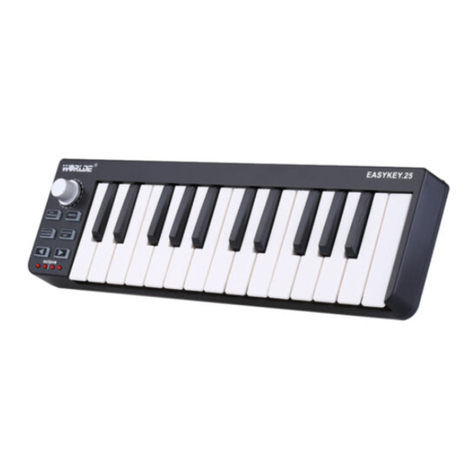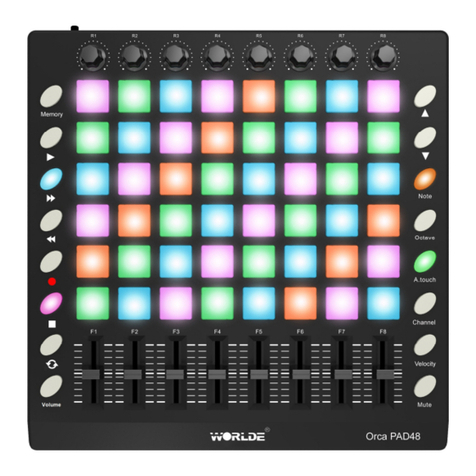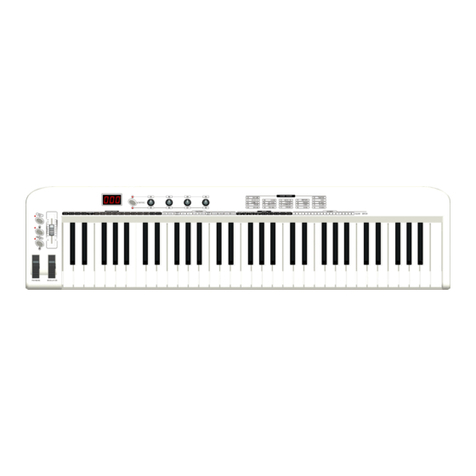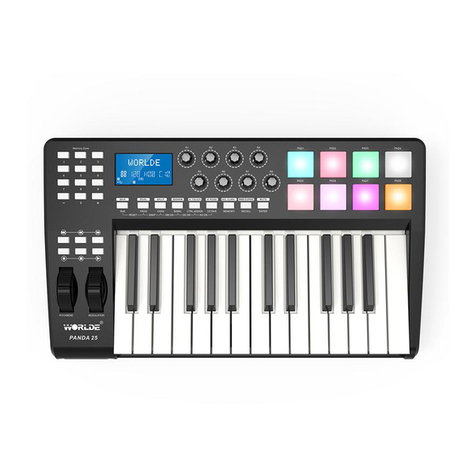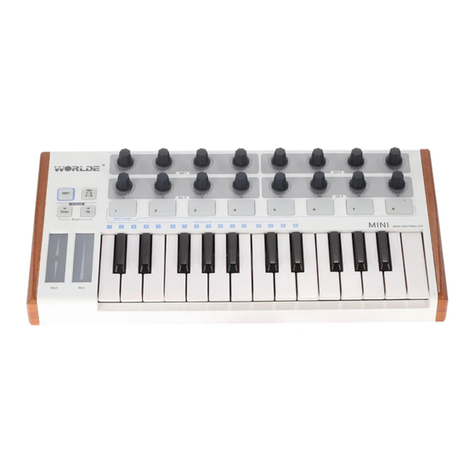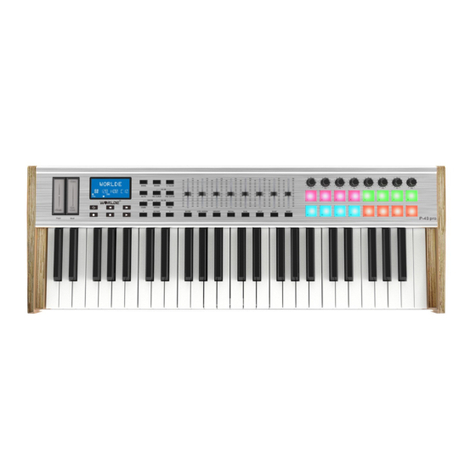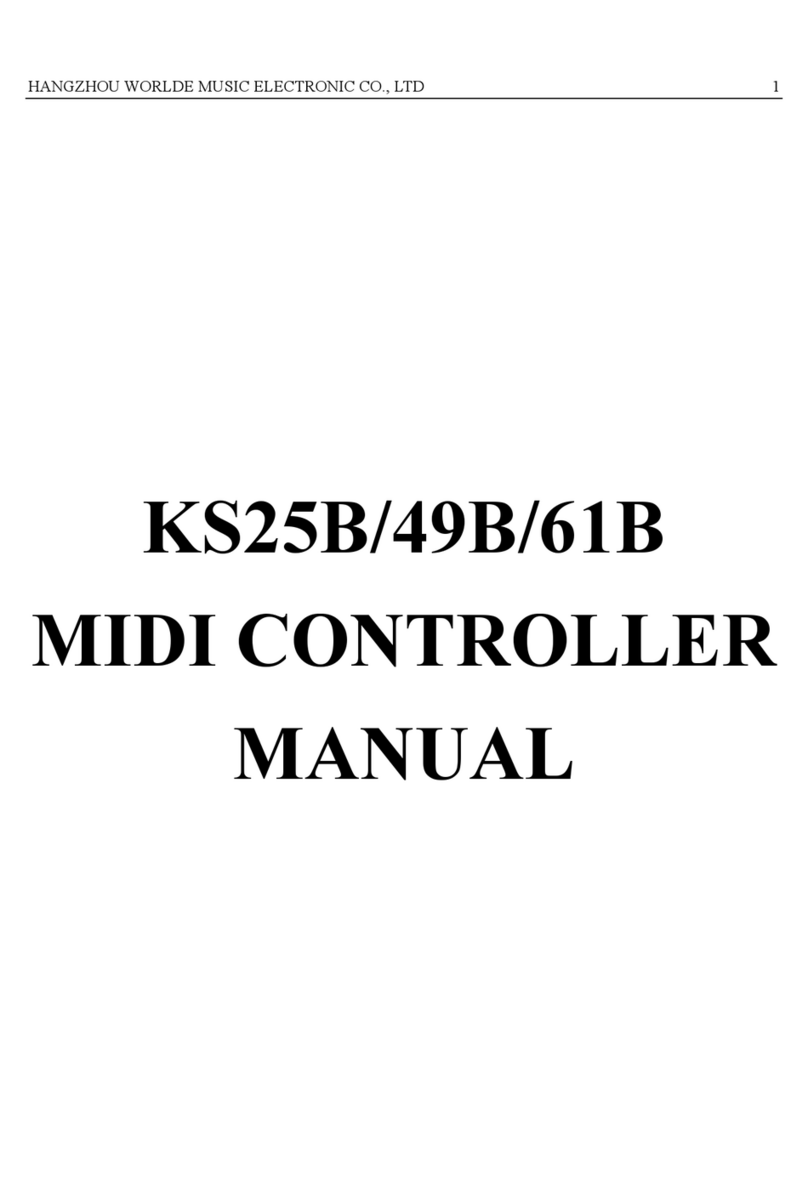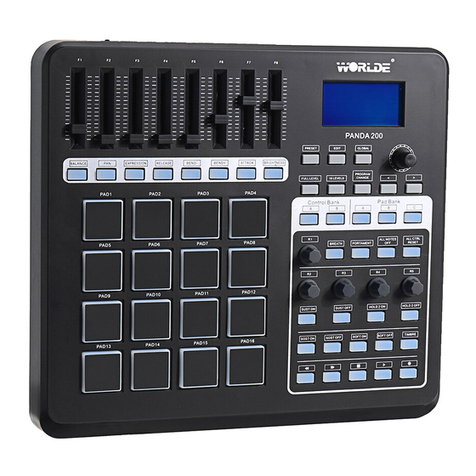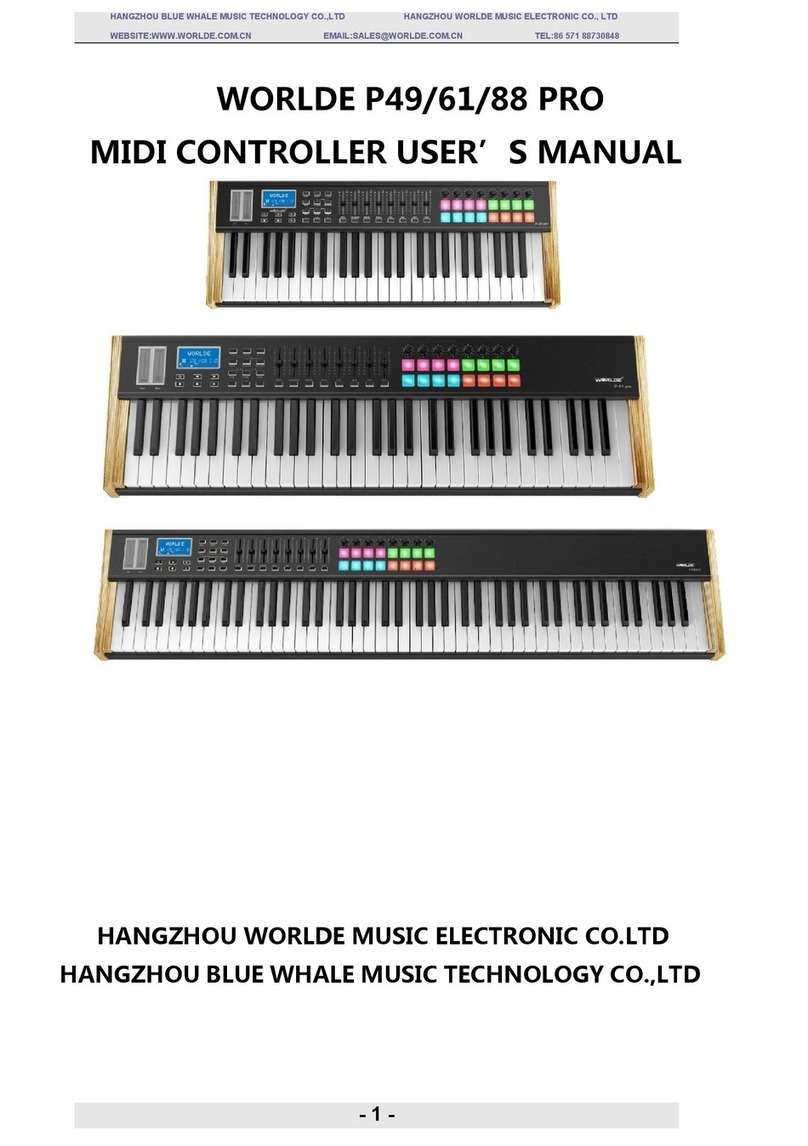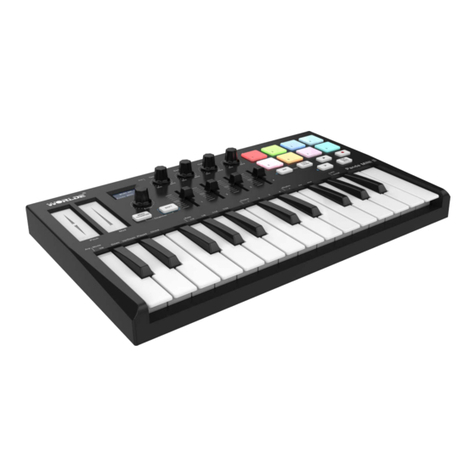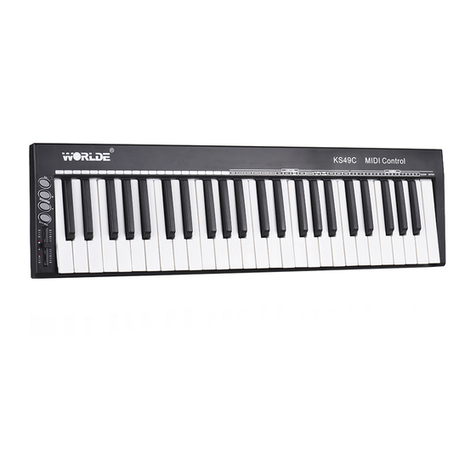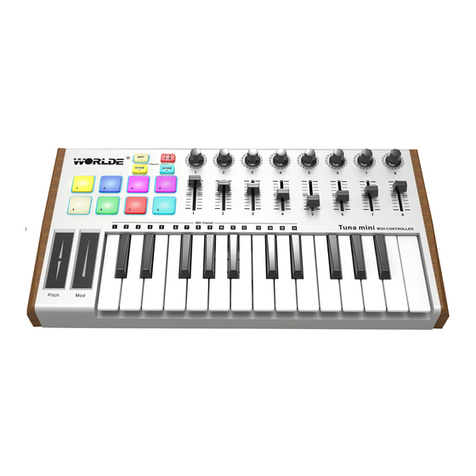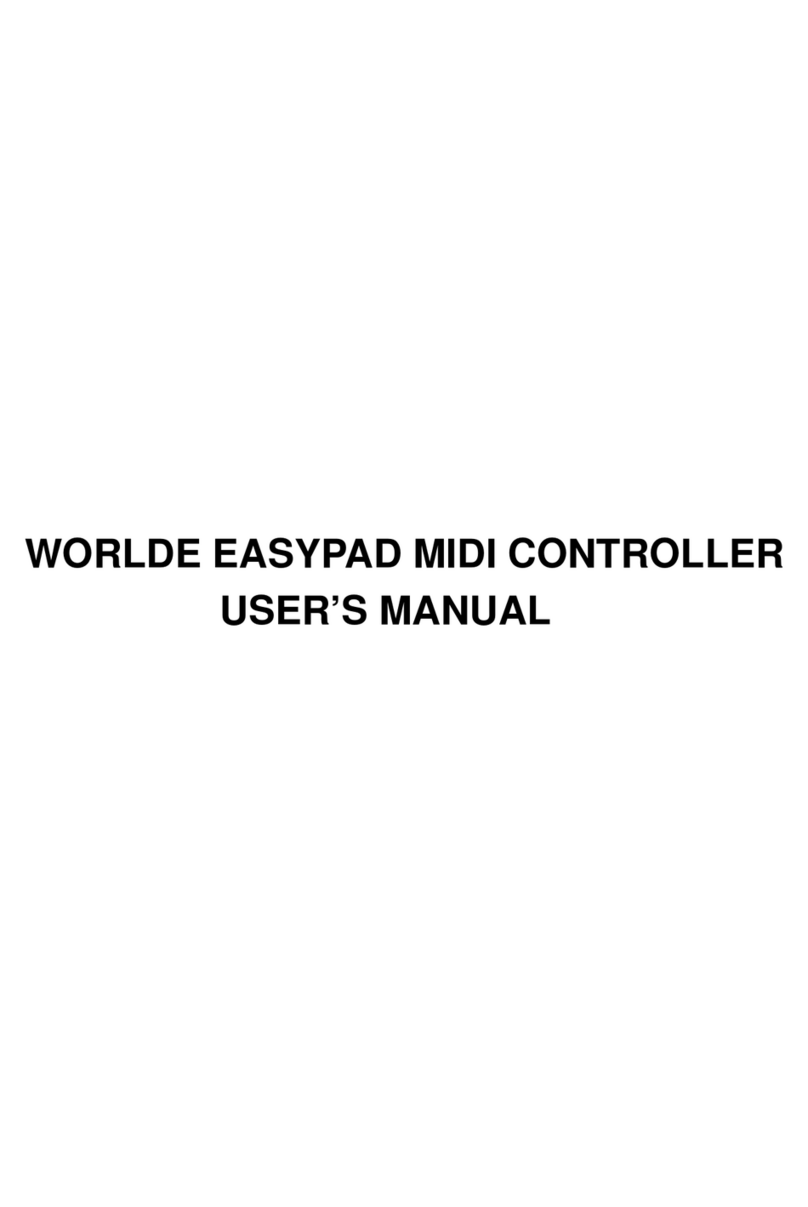
HANGZHOU BLUE WHALE MUSIC TECHNOLOGY CO.,LTD HANGZHOU WORLDE MUSIC ELECTRONIC CO., LTD
- 1 -
Contents
1. Introduction .............................................................................................................................................................................................. 2
2. Features ................................................................................................................................................................................................... 2
3. Getting Started ......................................................................................................................................................................................... 3
3.1 WORLDE Orca mini 25 Keyboard Overview ..................................................................................................................................... 3
3.2 Setup ................................................................................................................................................................................................. 4
3.3 Connecting to a Computer ................................................................................................................................................................. 4
3.4 Connecting to Mobile Devices ........................................................................................................................................................... 4
3.5 Using as a Standalone MIDI Controller ............................................................................................................................................. 5
4. Parts and Their Functions ........................................................................................................................................................................ 5
4.1 Keyboard ........................................................................................................................................................................................... 5
4.2 Trigger pads ....................................................................................................................................................................................... 5
4.3 Knobs ................................................................................................................................................................................................. 5
4.4 Pitch and Modulation touch strips ...................................................................................................................................................... 5
4.5 OLED Display .................................................................................................................................................................................... 5
4.6 Program change /+/-button ................................................................................................................................................................ 5
4.7 MENU/ Transpose button .................................................................................................................................................................. 5
4.8 SHIFT button ..................................................................................................................................................................................... 5
4.9 Arp button .......................................................................................................................................................................................... 6
4.10 Fixed Chord button .......................................................................................................................................................................... 6
4.11 ▶ Playback button ............................................................................................................................................................................. 6
4.12 ● Record button ............................................................................................................................................................................... 6
4.13 > Navigation button .......................................................................................................................................................................... 6
4.14 Stop/solo/mute/Enter button ............................................................................................................................................................ 6
4.15 Full sized USB connector ................................................................................................................................................................ 6
4.16 Sustain Pedal Jack .......................................................................................................................................................................... 6
4.17 3.5mm TRS MIDI Out port ............................................................................................................................................................... 6
5. Basic MIDI Control From Your Orca mini 25 ........................................................................................................................................... 6
5.1 MIDI Control Messages ..................................................................................................................................................................... 6
5.2 Programming the Controls on Your Orca mini 25 .............................................................................................................................. 7
5.3 Control assignment ............................................................................................................................................................................ 7
5.4 Assignable Knobs .............................................................................................................................................................................. 7
5.5 Assignable Pads ................................................................................................................................................................................ 8
5.6 Advanced Settings ............................................................................................................................................................................. 8
5.7 Other controls .................................................................................................................................................................................. 11
6. Using The Orca mini 25 With Your DAW ............................................................................................................................................... 12
6.1 Using your Orca mini 25 with Ableton Live ...................................................................................................................................... 12
6.2 Orca mini 25 Working with other Sequencer ................................................................................................................................... 21
7. Appendices ............................................................................................................................................................................................ 21
Appendix A-ASSIGNABLE CONTROLLER PARAMETER LIST ........................................................................................................... 21
Appendix B- Toxic or Hazardous Substances and Elements ................................................................................................................ 23
Appendix C-Note Value and The Corresponding Numerical Number ................................................................................................... 24
Appendix D- General MIDI Instruments-Program Change Numbers .................................................................................................... 25
Appendix E - General MIDI Drums-Note assignments .......................................................................................................................... 26
8. Specifications ......................................................................................................................................................................................... 26
